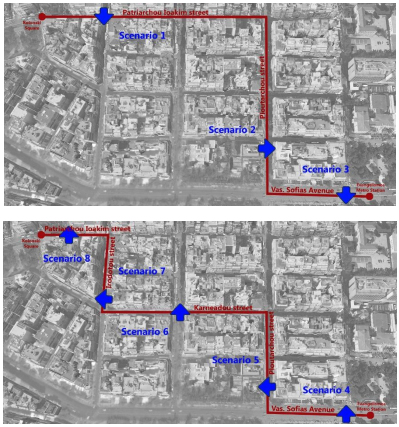
The objective of this research is the comparative analysis of observed and declared behaviour of pedestrians as regards roadcrossing in urban areas. A field survey was carried out, in which a panel of 75 young and middle-aged pedestrians (out of which40 males) were asked to take 8 short walking trips (each one corresponding to a different walking and crossing scenario andinvolving one road crossing) in the Athens city centre in Greece. This allowed to record their crossing behaviour in different roadand traffic conditions, including residential roads, main urban roads and major urban arterials. The same individuals were askedto fill in a questionnaire on their crossing behaviour and preferences at different road and traffic environments, as well as otherrelated questions concerning their travel motivations, their mobility characteristics, their risk perceptions and preferences etc. Acomparative analysis of their declared and observed crossing behaviour was carried out. More specifically, for each pedestrian,the rate of mid-block crossing and diagonal crossing during the walking tasks was calculated for the different road and trafficconditions. These were compared to their questionnaire responses on their crossing behaviour in different road and trafficconditions. The results suggest that, overall, pedestrians observed behaviour is in accordance with their declared behaviour.However, there is a non-negligible share of pedestrians, whose observed and declared behaviour were discordant, either atspecific road and traffic conditions or overall. For instance, there were pedestrians who declared that they never cross at midblockon major urban road but did so during the survey. Moreover, there were pedestrians who declared high frequency of midblockcrossing, but did not implement these crossing practices during the survey. The degree of discordance between pedestrianobserved and declared behaviour was further analysed in relation to pedestrian demographics. A weak tendency was identifiedfor female pedestrians to have more discordance between observed and declared crossing behaviour on residential roads, and thesame was the case for young pedestrians in all road and traffic conditions. Overall, the results suggest that, while mostpedestrians appear to have consistent declared and observed behaviour, there may all deviate from their general “profile” underspecific conditions.
| ID | pc226 |
| Presentation | |
| Full Text | |
| Tags | field surveys, pedestrians, road infrastructure |













